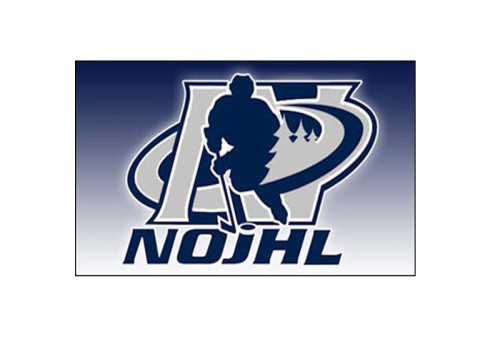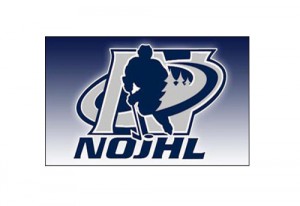MANITOULIN—Every morning, Robert Mazzuca wakes up in pain, sometimes so bad he said he doesn’t get out of bed. The pain he feels are from old injuries, injuries he received playing hockey in both the Northern Ontario Junior Hockey League (NOJHL) and the Ontario Hockey League (OHL).
Now commissioner of the NOJHL, Mr. Mazzuca is working overtime on limiting injuries to the kids who are playing hockey in the league, including one of the harder-to-diagnose injuries—concussions.
Even though the Manitoulin Islanders are gone, there are Manitoulin hockey players lacing up for the NOJHL. Some play for the Sudbury Cubs (formerly Sudbury Junior Wolves), while others may play elsewhere. Regardless of where the players come from, though, Mr. Mazzuca doesn’t want them to crack their heads on his watch.
“You want to be able to tell parents that their son or daughter will be able to grow and play to the best of their abilities, without having a needless injury from a needless hit,” he said.
The NOJHL is the first league in the Canadian Junior Hockey League (CJHL) to introduce a mandatory concussion program, which is managed by Dr. Michael Czarnota. Dr. Czarnota developed the program used by the Canadian Hockey League, which oversees the Western Hockey League, the Quebec Hockey League and the OHL.
“He’s probably the leading expert on concussion injuries and programs in hockey in Canada,” Mr. Mazzuca noted. “We’re fortunate to have him working with us.”
Each player undergoes a test to determine baseline results, and if they then take a hit where a concussion is a possibility, they’re pulled off the ice and tested. The results are then compared to the baseline and the comparison will determine if the player is out of the game, and for how long.
Giving the program teeth are the penalties given to players who give out the serious sorts of hits that land players in the hospital. Starting at a minimum two-game suspension for a serious hit to the head, Mr. Mazzuca can suspend players indefinitely from the league if required.
“I just handed out a six-game suspension a few weeks ago,” he said. “It was a second offence, and the first time he received a three-game suspension.”
Though injuries like the one that took Canadian Hockey star Sidney Crosby out of the game for almost a year draw attention in the media, the fact is younger players take those type of injuries often enough that leagues need to be proactive, Mr. Mazzuca suggests.
So far this year, his league has had nine players out of play due to concussions—six in October, two in November and one in December. Of those players suffering concussions, seven were forwards and two were defensemen. Elbows to the head caused five of the injuries while the remaining four concussions were caused by hits that drove the victims’ heads into the boards.
Of those players, eight are back on the ice, though one won’t be back on the ice until next year, Mr. Mazzuca said. That player took his hit early in the season, in late September.
Change is on the way, though. At the league level, Mr. Mazzuca is trying to set an example and show that concussion testing is fairly inexpensive to start and is well worth it.
At the parliamentary level, Sudbury MP Glenn Thibeault has re-introduced his private members’ bill, C-319. The goal of the bill is “to bring together provincial and territorial ministers responsible for health and sport with representatives of the athletic and medical communities for the purpose of developing a natural strategy to reduce the incidence of serious injury in amateur sport.”
“We’re not experts,” Mr. Thibeault told The Expositor. “We want to get the experts together to figure out ways to reduce the number of concussions in sports. Can we make them go away completely? No. There’ll always be concussions. But we want to reduce the number of them.”
Mr. Thibeault, an avid hockey fan, was inspired by junior hockey player Patrice Cormier’s vicious hit against Mikael Tam. Mr. Tam was out of the sport for a long period of time and, for a short time after the hit, reportedly stopped breathing. Mr. Cormier received an indefinite suspension from the league.
Prior to the hit, Mr. Cormier was the captain of the Team Canada junior hockey team, which won silver against the USA.
“Kids were still wearing his jersey,” Mr. Thibeault explained. “People were still emulating him as a hockey hero. You see this when they get on the ice.”
As a parent and a hockey fan, Mr. Thibeault said he wants to see things change, so the injuries Mr. Tam took become a very rare and very uncommon injury.
“It comes down to helping the grassroots organizations develop guidelines and then implement them,” Mr. Thibeault said. “We (the parliamentarians) aren’t going to help by being ‘referees’.”
Both Mr. Mazzuca and Mr. Thibeault agree the ‘suck it up’ mentality has to—and has been—changing.
“When something happens, (everyone) needs to make sure the players are taken off the ice and given a chance to heal before playing,” Mr. Thibeault said.
Over in the NOJHL, Mr. Mazzuca said players have already tried to bypass the concussion protocols.
“We had one player come in with notes from two doctors saying he had recovered from his concussion,” he recalled. “The coach called our doctor, who said ‘absolutely not’.” The player ended up failing his next concussion test.
Mike Meeker, coach of the girls’ hockey team at Manitoulin Secondary School, said one of his graduated players, who now plays for the University of Ottawa, is playing with sensors right in the helmet. If one of the girls takes a hit or tumble that had enough force to possibly cause a concussion, the coaches are notified at the bench and the player is called off the ice.
So far this year, there have been six girls sidelined with concussions, Mr. Meeker noted of the Ottawa team, though one was due to a non-sports-related injury.
“That’s not unusual, though it is baffling,” Mr. Mazzuca said. “Girls’ hockey has up to five times as many concussions as boys’ hockey, even though it’s not a contact sport.”
Mr. Thibeault, though, said the prevalence of concussions in girls’ hockey shows that it doesn’t take a nasty hit to cause a concussion.
“Any time your head comes to an abrupt stop, your brain can crash against the inside of the skull and a concussion can happen,” he said. “It’s not just about brutal hits.”
Mr. Mazzuca said he remembers older, retired players cautioning him as he was a young man playing hockey.
“You didn’t want to listen to those old geezers,” he said. “You were different. You’re young.” He said when he tries to speak with kids, he talks about the positives and educates about the negatives.
“The game is changing, for the better,” he noted. “It’s been about 10 years since we started to really discourage hits from behind. Those are the kids you’re seeing moving into upper level hockey. In a few years, there’ll be more changes, too. It keeps getting better.”
If Mr. Thibeault’s bill is passed into law, he hopes that it will result in guidelines that really make a difference for kids.
With concussions costing about $188 million in hospital visits and care each year, according to a 2009 Smartrisk study, it’s apparent the “ramifications and costs” are starting to be known.
“The ramifications are there,” Mr. Thibeault said. “If you have a concussion, you can’t go to class, because the lights hurt your eyes too much. You can’t go to work.”
Physical changes caused by concussions can be permanent, too, as Mr. Mazzuca found out.
After taking a hit to the head at the age of 18, he needed glasses for his vision. Before that, his eyesight was perfect.
“Was it worth it (playing hockey), back then? Absolutely,” he said. “Now? No. You just try to bring your experiences to the kids so they don’t get hurt.”





